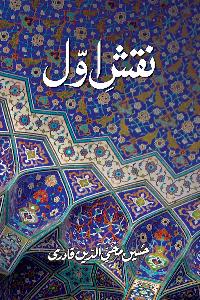Contents
Preface
Chapter 1: Concept of Serving Humanity in Islamic Teachings
1.1 Inducements and Commandments on Attending to the Needs of Humanity
1.1.1 Divine Directives on Serving Humanity
1.1.2 Prophetic Traditions on Serving Humanity
1.1.3 The Exemplary Conduct of Companions
and the Righteous Regarding Serving Human
Beings
1.2 The Divine Command of Charity and its Reward
1.3 Prophetic Traditions on Charitable Spending
1.4 Charity is the Foundation of Virtue
1.5 Charitable Donations Draw One Near Allah Most High
1.6 Charitable Donations are Actual Piety
1.7 Some Forms of Charitable Donations
1.8 The Rightful Recipients of Alms
1.8.1 Needy Relatives
1.8.2 Poor Non-Muslim Citizens
Chapter 2: Muslim Saints as Role Models on Serving Humanity
2.1 Ma'ruf Karkhi’s Caring Conduct Towards the Rebellious
2.2 Ma'ruf Karkhi’s Kindliness Towards an Orphan
2.3 Bishr al-Hafi’s Sensitivity to the Poor
2.4 Abu Yazid al-Bis>ami Serves the Neighbour
2.5 Ibrahim b. Adham’s Self-Sacrifice
2.6 Habib al-'Ajmi’s Generosity During a Famine
2.7 Nuri Prefers His Fellows
2.8 Shaykh 'Abd al-Qadir Jilani’s Kindliness to the Poor
2.9 Shaykh Nizam al-Din AwliyaE’s Selfless Help to the Needy
2.10 Makhdum Jahaniyan Jahangasht’s Kind- Hearted Treatment of an Arab
2.11 Khawaja Zakariyya Multani’s concern for the poor
2.12 Hafiz Muhammad 'Ali’s Consideration of the Poor
2.13 Shah Fakhr al-Din of Delhi’s Benevolent Treatment of a Prisoner
2.14 Summary
Chapter 3: The Tombs of Muslim Saints
Providing Services for the Welfare of the Community
3.1 Development Experts on Khanqahs and Shrine-based Philanthropic Organizations
3.2 The Nature and Activities of Khanqahs and Sufi Shrines
3.2.1 Khanqahs of Sufi Shrines
3.2.2 Model Khanqahs
3.3 An Analytical Study of Journeys Towards
the Khanqahs and the Shrines of Saints
3.3.1 Obligatory Religious Journey
3.3.2 Non-Obligatory Religious Journey
3.3.3 How a Journey Towards the Pious Folks Earns a Sinner Forgiveness
3.4 Financial Support and Management
3.5 Religion and Charity in Pakistan
3.6 Individual Donations Run Khanqahs and Shrines, Not Institutionalized Funding
3.7 Sufi Shrines in Different Parts of the World
3.7.1 Sufi Shrines of South Asia
Chapter 4: A Study of Popular Shrines in Pakistan
4.1 The Annual Income of Shrines
4.2 Shrine of Data 'Ali Hujwiri (Data Darbar)
4.2.1 The Annual Income of Data Darbar and its Sources
4.2.2 The Annual Expenditures on Food Services
4.2.3 Welfare Projects Operating Under the Administration of the Shrine
4.2.3.1 Hospital
4.2.3.2 Ali Hujwiri Handicraft School
4.2.3.3 Basic Religious and Technical Education
4.2.3.4 Financial Support to Poor Women for their Wedding
4.2.4 Expenditures on the Mosques Operating
Under the Supervision of Data Darbar
4.2.5 Businesses Related to the Shrine
4.3 Shrine of Baba Farid Shakar Ganj
4.3.1 The Annual Income of the Shrine and its Resources
4.3.2 The Annual Expenditures on Food Services
4.3.3 Welfare Projects Operating Under the Administration of the Shrine
4.3.3.1 Hospital
4.3.3.2 Financial Support to Poor Women for Wedding
4.3.3.3 Opportunities of Employment
4.3.3.4 Businesses Related to the Shrine
4.4 The Shrine of Baba Bulleh Shah
4.4.1 The Annual Income of the Shrine and its Resources
4.4.2 The Annual Expenditures on Food Services
4.4.3 Welfare Projects Operating Under the Administration of the Shrine
4.4.4 Businesses Related to the Shrine
4.5 Shrines of BahaE al-Din Zakriyya and Shah
Rukn 'alam
4.6 Conclusion
Bibliography
Copyrights © 2025 Minhaj-ul-Quran International. All rights reserved



